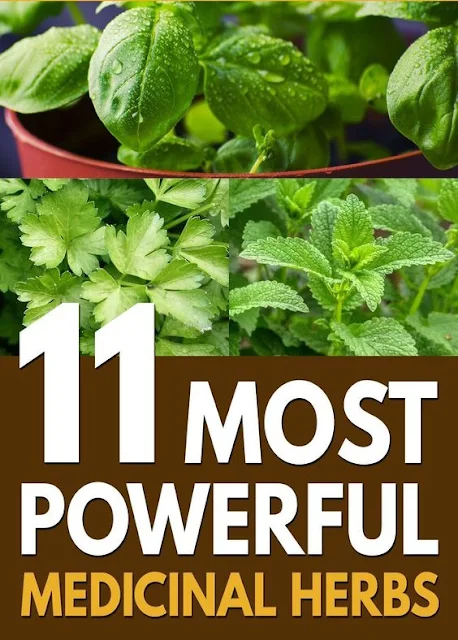Herbs have been used for centuries in medicine and nutrition. Many herbs have strong antioxidant, anti-inflammatory, and antiseptic qualities in addition to flavoring food.
While fresh herbs can be found in many grocery stores, growing your own at home is simple and affordable. Actually, most herbs grow nicely in a backyard or even on a windowsill in the sun.
1. Basil

Fragrant and easy to grow, basil is a tasty addition to soups, sandwiches, and many Mediterranean dishes. The herb also contains oils and flavonoids that help protect the body from illness and infection.
Basil contains vitamins A, C and K, copper, manganese, calcium, magnesium, iron and helpful omega-3 fatty acids. As a medicinal herb, basil can work as anti-septic for cuts and scrapes, and it can offer relief from headaches, flatulence, and a lack of appetite.
Grow your basil plant from seed in a warm, sunny location, and keep the soil moist. An annual plant, basil is quite sensitive to cold. Indoors, keep it away from drafty windows and outdoors, cover it on days when the temperature dips below about 50 degrees. Simply snip the leaves for use.
2. Catnip

Catnip is so named because cats are attracted to it and enjoy its aroma. For people, catnip has a similar effect in that it can be used as a stress reliever by breathing it in. This is because of the presence of nepetalactone and thymol in catnip, which likewise can be used as a sleep aid or to relieve skin irritation.
The best way to use catnip is to either brew a few of its leaves for tea, or to dry the leaves and burn them while inhaling its aroma.
3. Cayenne Pepper

Cayenne pepper is usually used to add spice to meals, but it can be used as a body detoxifier as well. That’s because the primary compound in cayenne pepper is capsaicin, which while responsible for the spicy kick that cayenne pepper offers, is also responsible for boosting your body’s metabolism, improving blood circulation, improving digestion, and detoxifying the body.
Besides adding cayenne pepper to dishes, dressings, or sauces, you can also consume it directly, either in its original form or as a pill.
4. Chamomile

Known as a soothing tea, chamomile is another easy medicinal plant to grow at home. In addition to its calming properties, chamomile provides relief for an upset stomach and can ease skin irritations. Chamomile also has been used for centuries as a gentle way to calm colicky babies.
Chamomile plants prefer full sun and can grow to about 18 inches tall. German chamomile is easy to grow from seed, and after the first season, the plants self-sow freely.
The pretty daisy-like flowers appear within six weeks of planting, allowing two plantings in one outdoor growing season. German chamomile prefers a cool climate, full sun and neutral to slightly acidic, well-drained soil.
Place the blooms in a warm, dark place to dry.
5. Echinacea

Known for its healing properties for treating the common cold, Echinacea (also known as coneflower) is useful both as a tea and in a tincture form.
The purple plant grows to about two feet tall and requires full sun. Echinacea is biennial and flowers only in its second season.
6. Fennel
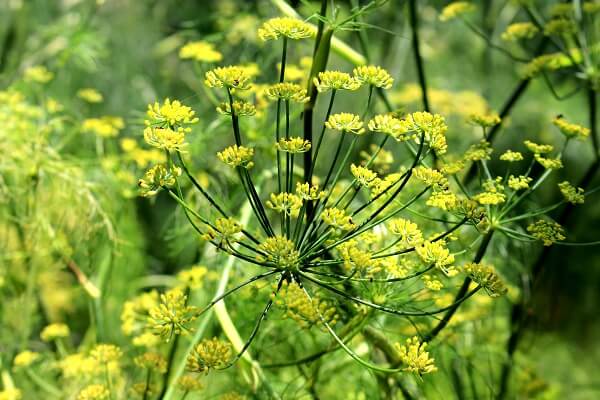
Often recognized for its licorice-like flavor, fennel is a hardy perennial that’s both a culinary favorite and a medicinal treasure. It’s known to have diuretic, pain-reducing, and anti-inflammatory effects, and is often used for digestive problems like bloating, gas, and stomach cramps.
Fennel is quite easy to grow and prefers full sun and fertile, well-drained soil. It can grow quite tall, so be sure to give it plenty of room. The bulb, foliage, and seeds of the fennel plant are all edible and beneficial to health.
7. Feverfew
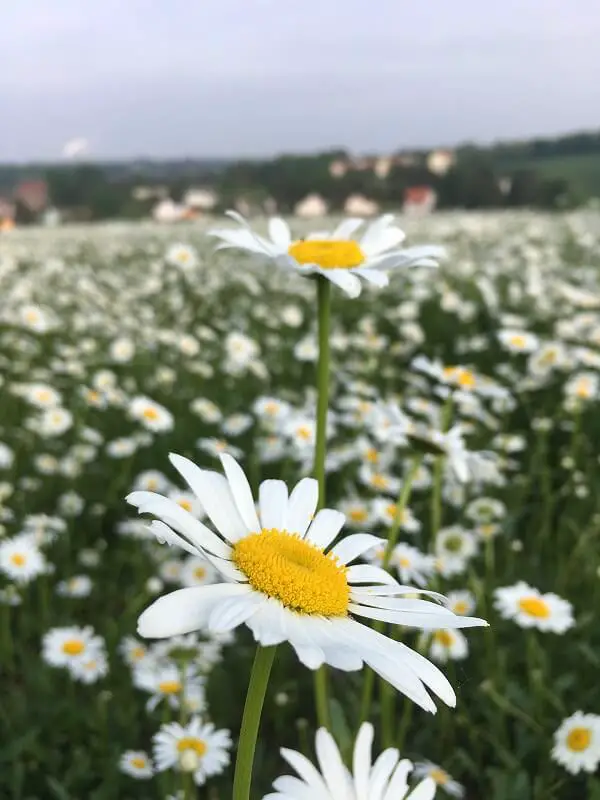
Feverfew, as the name suggests, has historically been used as a fever reliever. It can also be used to alleviate pain from arthritis and migraine headaches or to prevent a migraine headache from developing further when it begins.
Tie several stalks of feverfew into a bundle, and then dry for a week outside. You can then brew it as tea, or consume it directly in the form of capsules. As an added benefit, it’s an effective insect repellant too. Just take note that feverfew can also cause digestion irritation as a side effect, so be aware.
8. Ginger
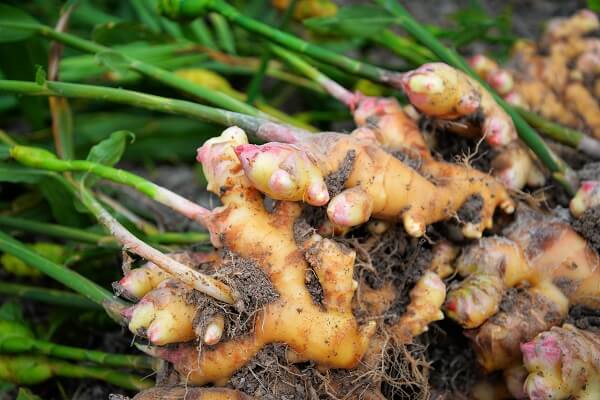
While ginger is often considered a spice, it’s actually a flowering plant whose rhizome (underground stem) is used for its culinary and medicinal properties. Known for its distinctive flavor, ginger is also well-regarded for its anti-nausea, anti-inflammatory, and antioxidant effects. It can help with issues such as motion sickness, morning sickness, inflammation, and even lower cholesterol levels.
Ginger prefers warmer climates but can be grown indoors. It’s grown from the rhizome, which can be planted in a pot with rich, well-draining soil. Allow the ginger plant to mature before harvesting, which generally takes about 8-10 months.
9. Goldenseal

Goldenseal is a natural antiseptic that is effective for diarrhea and improving digestion. It is also used to treat pneumonia, liver problems, urinary tract infections, chronic fatigue syndrome, and many other disorders.
This is because it contains a plant alkaloid called berberine, which has been used as a natural healing medicine all over the world for thousands of years, beginning in China and India. Just be aware that it’s not considered safe for children, including unborn children, so pregnant women should avoid it as well.
You can use fresh flower buds to make a tea that helps prevent and treat cold and flu symptoms. Making a tincture involves steeping the flower buds, roots, or both in pure, concentrated alcohol for four to six week weeks, and then removing the liquid.
10. Holy Basil
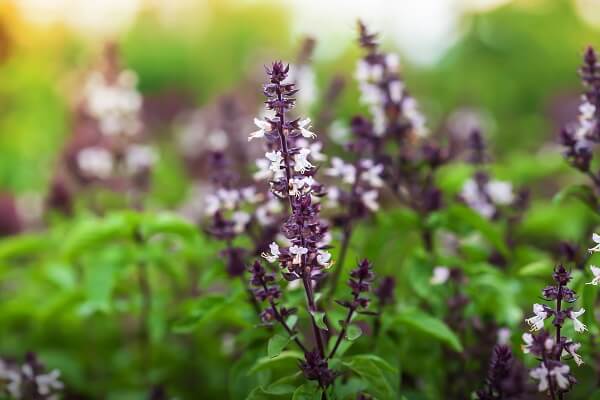
Different from the common culinary basil, Holy Basil, or Tulsi, is an aromatic plant that’s held sacred in Hindu tradition and widely used in Ayurvedic medicine. The herb is celebrated for its adaptogenic properties, helping the body resist physical, chemical, and environmental stressors. It is often used to promote mental balance, improve digestion, and support the immune system. Some research even suggests it has antimicrobial and anti-diabetic effects.
Holy Basil thrives in full sun and prefers well-drained, nutrient-rich soil. This plant can grow to about 2 feet tall and has delicate purple flowers. You can harvest the leaves as needed for fresh use or dry them for teas and medicinal preparations.
11. Lavender

Even the fragrance of this lovely herb helps people feel calmer and more relaxed. Lavender also eases the pain of cuts and bruises and functions as an antiseptic when applied topically.
Lavender grows best in dry, well-drained soil with full sun exposure. It requires little to no fertilizer and adequate air circulation. Keep safe from strong winds.
Lavender can help treat digestive problems, bad breath, headaches, toothache, nausea and vomiting. Adding some dried lavender to your bath water can help alleviate stress as well as insomnia.
